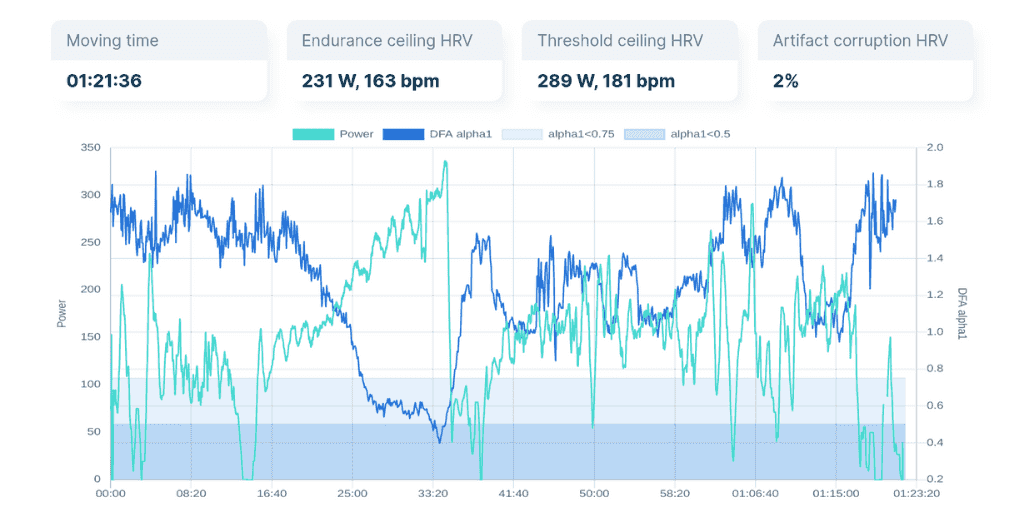
When it comes to sport and fitness, it’s not all about training hard but it’s about training smart. We are often asked about training plans and if they are worth your money to invest in them.
As an ultra-endurance athlete and personal trainer, I often design training programs for clients to achieve big goals. Training plans aren't just about getting fitter. They also come with a huge amount of other benefits, which in this article, we’re going to discuss:
A training plan is a structured approach to achieving your goals. It takes the guesswork out of getting the adaptations you want and gives you the best chance possible to get where you want to be.
You could be wanting to run a marathon or cycle a century. Whatever your goal, if you're thinking big, going in with a training plan put together by a professional will hugely help. Training plans are generally specific to the goal you have in mind but will often have a mix of many different workouts.
If you are looking at improving your endurance while cycling, you would be doing a mix of long and short workouts to make the miles easier and condition your body to ride further and give it adequate recovery to grow.

Photo Credit Unsplash
What a lot of people don’t know is there are a huge amount of benefits to having a training plan, and any seasoned athlete will tell you that you need one. Here’s what you can expect:
If you have a training plan, you are going to get better results. I personally see so many athletes go to training and do what session they feel like on the day, and this doesn’t always work out for the best.
It’s easy to get lazy and not go in with enough intensity or skip out of sessions early, thinking you have achieved the best you can. In many cases, it gets to a point even though you may be training, you're not gaining fitness, just maintaining it.
Knowing your fitness limits is very challenging, and it’s easy to fall into the trap of not pushing yourself enough at times because it might feel uncomfortable or you might not have the confidence.
A good training program does push you further by adding in proper progression. For example, each time you go to train, you might train for longer or might try and raise the intensity of a session by running or cycling quicker.

Photo Credit Unsplash
Having a training plan does force you to add a mix of different sessions. To make the correct adaptations to the body, mixing low and high-intensity sessions and even cross-training ensures the best results possible.
A good example is a long-distance runner. They will benefit from doing not only longer low-intensity miles but also short sharp, high-intensity sprints. Some will even add strength and conditioning to push the body further and prevent injuries.
One of the best things about having a training plan is you will be regularly testing. A good example could be a cyclist doing a functional threshold (FTP) power test. This is a 20-minute power test to see if you are improving.
Doing these tests regularly can indicate that you are making progress and, if not, why you might not be making progress. Although it may not feel nice and be fatiguing, testing is so important.
Even better, AI Endurance attempts to detect your thresholds automatically during every workout if you have the right equipment - even if you’re not doing a dedicated test workout like an FTP test.
If you have a training plan, then you can account for a taper. A taper is a process while you start reducing training intensity and volume when you are getting close to a race or an event. This is a great way to ensure you are race ready and can maximize performance.
A training plan can be adapted to ensure you have the perfect taper for your planned events. The perfect taper could account for the difference between a win and a loss for professionals.
As a coach, one of the biggest problems I find with clients is not the fact they can’t bring themselves to train regularly but that they overtrain. Overtraining can be worse than not training at all. It can stop you from making progress and even cause you injuries.
Having a training plan stops you from going in too hard and provides adequate recovery for your workload. This means your body has the time to rest and recover, ensuring you make the correct adaptations to achieve the goals you may have in mind.
Having a training plan structures everything for you. If you tick all the boxes, you will improve and get fitter. The process is that simple. A training plan makes you accountable for your actions toward your training.
If you miss sessions or don’t do the correct sessions in your plan, you are accountable for not hitting your goals. It’s a great motivator not to let yourself down and to be completely accountable for your progress.
When you're giving a lot of time to training, you want to know that it’s been invested well. We find that many people worry much less about if they are going to make the required progress when they have a plan.
People without a training plan are always questioning if they are doing enough and if the adaptations are going to be made, or if they are wasting their time.

Photo Credit Unsplash
When it comes to finding the perfect training plan for you, it can be challenging. There’s a lot you need to think about, and you want to ensure you are getting the right plan for you and that it will work.
Using our AI software we can create the perfect training plan for you with the right sessions and proper progressions. This is going to give you the right training for only $12.99 a month. You can find out more here on the AI Endurance Product Page.
Thanks for taking the time to enjoy our article, and hopefully, you are ready to take on a plan.
You might also enjoy What Muscles Does Cycling Work? or Buying A Beginner Triathlon Bike. Writer Credit Robbie Ferri.

DFA alpha 1 is a heart rate variability (HRV) metric that allows tracking of the aerobic and anaerobic threshold. We explain the breakthrough potential of this new metric and how you can track your DFA alpha 1 thresholds with the AI Endurance app, Garmin and Zwift.

by Grant Paling. Our increasingly digital society is becoming more and more data driven. And with that, we make decisions. I hear a lot the phrase “if you torture the data long enough it will tell you whatever you want.” I get it but I also think that’s usually the phrase used by someone who doesn’t WANT to believe the data. Because good data is hard to argue with.

Get your AI Endurance best training plan into TrainingPeaks. From there, you can execute your TrainingPeaks workouts in Zwift and many other apps. Connect your AI Endurance account once and any changes will automatically be synced with TrainingPeaks.

by Grant Paling. In my last blog, I closed the chapter on my European Championship race in Portugal. It definitely was an intense period leading up to, during and after the race. So many emotions, so much effort invested and then…what’s next?